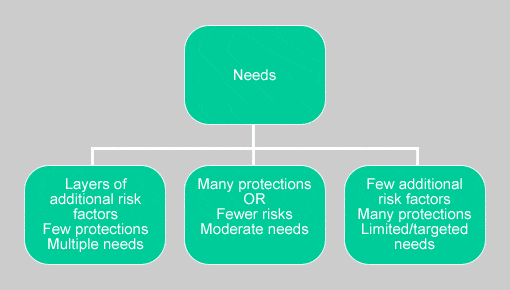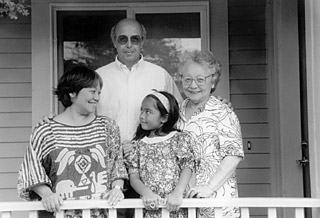Continued Challenges and Opportunities for Growth
Clearly, many of the recommendations from the 2008 report still need to be realized. However, I will use this opportunity to highlight a few issues not considered in the report, but that, I believe, warrant attention.
First and foremost, the population of incarcerated individuals, and thus parents, continues to grow. The documented number of children affected has increased since my 2008 report. Now it is estimated that over 1.7 million children under the age of 18 had a parent in state or federal prison in 2007, representing 2.3% of the total U.S. child population. 1 The number of children with a father in prison increased from 881,500 in 1991 to over 1.5 million in 2007, a 77% increase. During that time, the number of children with a mother in prison increased 131%, from 63,900 to 147,400. 2
New Areas of Research
These growing numbers are of great concern. The challenges to families due to parental incarceration are many and complex, and since the 2008 report, there has been a surge of explanatory research on this topic. 3 Viewed cumulatively, this research shows that parental incarceration likely has direct effects on children resulting from the trauma of separation by incarceration (although the causal mechanism is not yet clear), but that parental incarceration is also a marker for additional risk factors. While children’s responses to these risk factors vary, a significant number of children of prisoners experience challenges functioning academically and socially.
Research suggests that these children evidence higher levels of conduct disorder and acting out. They are more frequently exposed to violence, parental substance abuse, child abuse and neglect, and parental mental health issues, and are more likely to demonstrate significant behavioral, social-emotional, and school-related problems. 4
Ann Adalist Estrin, Director of the National Resource Center on Children and Families of the Incarcerated (NRCCFI) at the Family and Corrections Network, has provided a useful framework for understanding the varying needs of children with incarcerated parents, as seen in Figure 1 below. 5

Ann also notes the need for further research in the areas of brain development, trauma, temperament, and attachment theory to understand the challenges to and effective services for children with incarcerated parents. Indeed, because the average age of children with an incarcerated parent is eight years old, with 58% under 10, and 22% under five, the developmental effects of parental incarceration need to be seriously considered.
- Lauren E. Glaze, and Laura M. Maruschak, “Parents in Prison and Their Minor Children,” published by The Bureau of Justice Statistics, 2008.[↑]
- Ibid.[↑]
- See The National Resource Center on Children and Families of the Incarcerated at Family & Corrections Network for a current listing of published studies.[↑]
- Oliver Edwards and Ray Shannon, “An Attachment and School Satisfaction Framework for Helping Children Raised by Grandparents,” School Psychology Quarterly 23 (2008): 125-138; Keva M. Miller, “The Impact of Parental Incarceration on Children: An Emerging Need for Effective Interventions,” Child and Adolescent Social Work Journal 23 (2006): 472-486; Susan D. Phillips, Barbara J. Burns, H. Ryan Wagner, Teresa L. Kramer, and James M. Robbins, “Parental Incarceration Among Adolescents Receiving Mental Health Services,” Journal of Child and Family Studies 11 (2002): 385-399; Julie Poehlmann, “Children’s Family Environments and Intellectual Outcomes During Maternal Incarceration,” Journal of Marriage and Family 67 (2005): 1275-1285.[↑]
- Ann Adalist Estrin, Presentation at the Family & Corrections Network Child Welfare League of America 2008 Conference, FCN Super Session Presentation, February 27, 2008.[↑]



